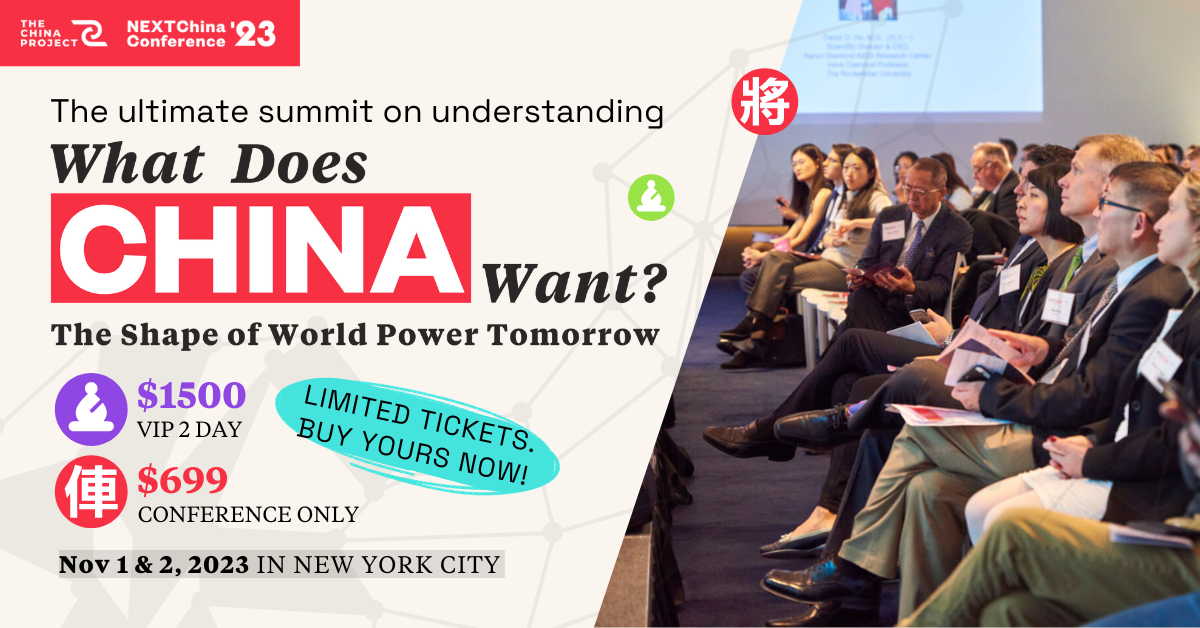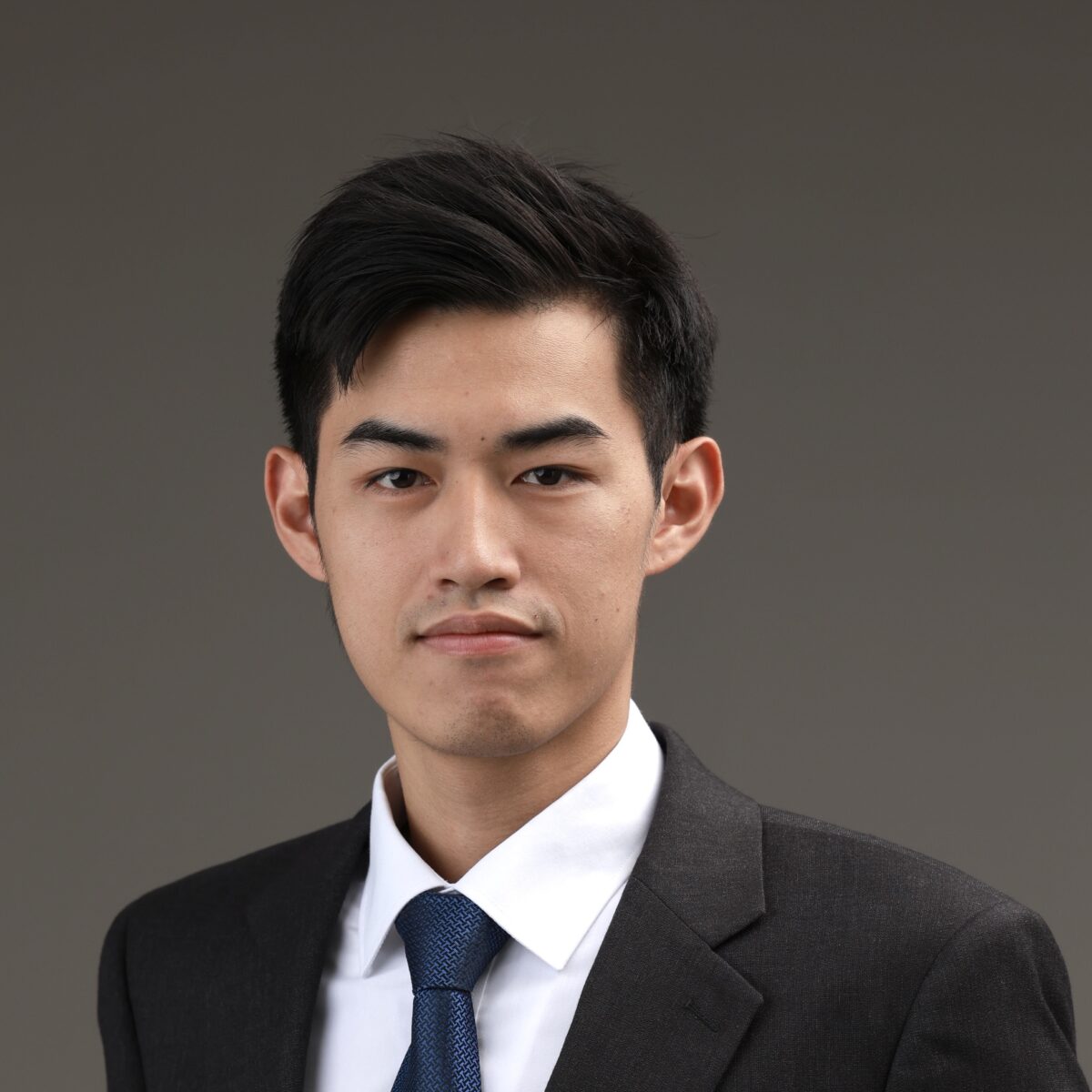Taiwan’s opposition candidate outlines tougher new strategy against China
Hou Yu-ih, the Kuomintang candidate for president of the Republic of China, visited the U.S., where he signaled a tougher line on China than his party has previously taken with his 3D Strategy: The first "D" stands for “deterrence.”

With Taiwan’s presidential election less than four months away, opposition candidate Hou Yu-ih (侯友宜 Hóu Yǒuyí) embarked on an eight-day visit to the United States, where, starting on September 14, he met with U.S. officials and academics to articulate his positions on defense, foreign relations, and cross-strait policy.
The primary goal of this visit was to convey a compelling message to policymakers in the U.S. and voters in Taiwan: Hou is a stable and pragmatic leader with well-defined policy guidelines designed to help navigate thorny relations between the U.S., China, and Taiwan in the coming years. Hou and his party, the Kuomintang (KMT), also aim to leverage this opportunity to establish his profile and forge connections within Washington’s policy circles.
Close observers of Taiwanese politics noticed a subtle shift that emerged from Hou’s visit. The leader of the KMT party, historically the Taiwanese political party most willing to engage with Beijing, signaled clearly during his visit an openness to tougher cross-strait policies in the wake of changing domestic and international views on China. The shift could mark a more permanent transformation in Taiwanese politics, with implications for the triangular relationship between China, the U.S., and Taiwan.
Getting tougher on China
During his recent stop in Washington, D.C., Hou introduced the “3D Strategy” in a speech at the Brookings Institution think tank on September 18. The 3Ds are “deterrence, dialogue, and decreasing risk.”
The strategy builds on the “2D Strategy” (comprising “defense and dialogue”), proposed by KMT Chairman Eric Chu (朱立倫 Zhū Lìlún) and later promoted by the KMT’s former chairman Johnny Chiang (江啓臣 Jiāng Qǐchén), who accompanied Hou during the visit.
Hours before Hou’s address at Brookings, Foreign Affairs magazine published an article by Hou titled “Taiwan’s path between extremes,” in which he described details of his policy positions on pivotal issues, including U.S.-Taiwan relations, cross-strait relations, and national defense. The publication’s timing underscored the KMT’s careful planning of the visit.
Such meticulous preparation appears to have yielded positive results. U.S. scholars who interacted with Hou expressed positive sentiments toward his preparation and gaining a better comprehension of his policy objectives.
Deterrence is the first “D” and key to understanding Hou’s position. In his Foreign Affairs article, Hou commits to bolstering Taiwan’s national defense.
“Taiwan’s most important priority should be to strengthen its national defense and deter the use of force by mainland China,” Hou wrote, placing a strong emphasis on asymmetric warfare, a defense strategy encouraged by recent U.S. administrations.
“Taiwan must creatively use available weapons and technologies, developing innovative and asymmetric capabilities that could stymie a large and well-resourced PLA,” Hou wrote, referring to China’s military, the People’s Liberation Army.
The 3D Strategy marks a turning point for the KMT. By putting Taiwan’s defense capability on top of his agenda, Hou seeks to send a strong message to China about his commitment to enhancing deterrence in preparation for potential aggression. This, coupled with a pragmatic approach to engaging with China to mitigate risks in the Taiwan Strait, greatly reflects the KMT’s evolving China policy.
Hou believes that enhancing Taiwan’s defense capabilities can increase the potential cost of war, thus reducing Beijing’s inclination to invade. In recent years, both major parties gradually have embraced the concept of asymmetric warfare due to military imbalances across the strait. They seek to challenge the PLA in the event of a Chinese invasion by employing high-end, unconventional, small, and mobile military assets at a relatively low cost.
Unlike Hou, KMT candidates standing for election against incumbent Taiwanese president Tsai Ing-wen (蔡英文 Cài Yīngwén) in 2016 and 2020 did not prioritize national defense or emphasize the connection between the constitution and the 1992 Consensus, the diplomatic basis for cross-strait exchanges between Beijing and Taipei’s officials, which began in the early 1990s.
“[The] KMT’s policy toward Beijing has always been rebalanced in accordance with a precise assessment of threats posted from the other side of the Taiwan Strait,” Alexander Huang (黄介正 Huáng Jièzhèng), the KMT’s representative in the United States and longtime foreign policy adviser, told The China Project. “Like many countries in the world, when Beijing turns more aggressive toward Taiwan, of course, the KMT needs to be tougher than the previous period of engagement no matter if it’s in power or in opposition.”
Shifting views among KMT elites
The new strategy outlined by Hou marks a gradual but significant transformation in the views of leading KMT policymakers regarding China. Over the last few years, this shift is primarily a response to evolving domestic and international dynamics, fueled by China’s assertive conduct on the global stage and escalating pressure on Taiwan across various domains.
Prominent figures within the KMT who play key roles in cross-strait policy, including KMT Chairman Eric Chu, former chairman Chiang, Alexander Huang, and Hou himself, have adopted a new view of China. This shift is fueled by a growing unfavorable sentiment toward Beijing within Taiwan, marking a departure from the relatively dovish China policy observed by Ma Ying-jeou (馬英九 Mǎ Yīngjiǔ ), the last KMT candidate to be elected president and serve, from 2008 to 2016.
“I have no unrealistic expectations about Beijing’s intention of seeking unification,” Hou wrote in Foreign Affairs, a statement he underscored multiple times throughout his U.S. trip.
Furthermore, Hou mentioned Taiwan’s status, claiming the “Republic of China is a sovereign state,” a view that sharply contrasts with Beijing’s claim that Taiwan is a part of China. Hou also does not shy away from referring to China’s aggressive military behavior against Taiwan, undermining regional or even global security.
While differences exist, the 3D Strategy marks a general convergence of the defense policy guidelines of Hou and William Lai (賴清德 Lài Qīngdé) of the ruling Democratic Progressive Party’s (DPP). Both prioritize improving Taiwan’s defense capabilities, with variations on the integration of asymmetric warfare and policy detail. The KMT, for example, may opt for a balanced approach, combining both asymmetric warfare and conventional forces instead of adopting a full-asymmetric warfare.
Despite the attention on asymmetric warfare in both parties, Taiwan’s officials are cautious about relying solely on those efforts. “The R.O.C. armed forces have built their own military based on critical demands…to counter enemies, and the guidelines of the commander-in-chief of Taiwan. Asymmetric warfare is a part of it, but not [everything],” a senior Taiwan defense official told The China Project on condition of anonymity. “From Ukraine’s counteroffensive [in its war against Russia], we learned the importance of conventional platforms, too.”
Some observers doubt Hou’s commitment to asymmetric warfare.
“The KMT’s long-term opposition to Taiwan’s procurement projects and defensive reforms contradicts Hou’s statement on deterrence,” said Michael Fonte, the director of the DPP’s Mission in the United States, citing the example of some KMT lawmakers seeking to halt the procurement this year of the Volcano mine-dispensing systems, which, in the event of an invasion of Taiwan, could be used to slow an advance by PLA troops.
Dialogue and de-escalation
In addition to prioritizing Taiwan’s self-defense capabilities, Hou advocated a balanced approach that blends strong defense with proactive dialogue on China as “a crucial way to defuse crises and ensure peace and stability.”
Official communication between Taiwan and China has been suspended since 2016 when the Tsai administration declined to accept the 1992 Consensus. Since then, Beijing has demanded adherence to the consensus as a precondition for governmental dialogue.
Beijing’s stance presents both of Taiwan’s front-running candidates with a predicament. While Lai is open to engaging with China, he has rejected the 1992 Consensus, potentially obstructing any future dialogue if he were to be elected. Conversely, Hou’s endorsement of the 1992 Consensus adversely impacts his support at home where the Consensus often is viewed unfavorably.
“I think Beijing is concerned about the presidential transition in Taiwan, but it is willing to deal directly with any president that accepts the 1992 Consensus,” Bonnie Glaser, the managing director of the Indo-Pacific Program at the German Marshall Fund of the U.S., told The China Project. “This is China’s long-standing position and shows a lack of creativity on Beijing’s part on how to improve cross-Strait relations.”
“China will have to find a new diplomatic approach if it hopes to have meaningful forward progress in dealing with the people and leadership in Taiwan,” Dennis Wilder, former China director in the U.S. National Security Council, told The China Project.
To address the impasse across the strait, Hou presents a road map for engaging with China. He voices support for the 1992 Consensus while emphasizing the importance of Taiwan’s constitution, a framing that was used by politicians before Tsai. Hou’s constitution-based approach to the 1992 Consensus and his emphasis on Taiwan’s democracy and sovereignty aim to reassure domestic supporters while providing practical policy for engaging with China.
Hou believes that the combined strategy of bolstering national defense and fostering dialogue can effectively de-escalate risks in the Taiwan Strait.
“Continued interactions between the two sides on functional matters will help de-escalate future risks,” Hou wrote in Foreign Affairs. “In this way, Taiwan can enhance understanding through exchanges and ensure peace through strength.”
Aligning to U.S. interests
Both major parties in Taiwan are seeking to present a policy outlook that is in line with Washington’s interests, an outlook that could earn the trust of U.S. policymakers even as the Biden administration has taken a cautious, neutral approach in Taiwan’s presidential election.
The 3D Strategy also was designed in part to align with U.S. interests. American officials have consistently called on Taiwan to strengthen its national defense while encouraging constructive dialogue across the strait, both of which are key components of Hou’s policy agenda.
“Candidate Hou’s proposals on self-defense improvements are consistent with current U.S. policy,” Wilder added. “The philosophy of combining a strong deterrent capability with cross-strait dialogue is also very much consistent with U.S. policy.”
The challenge remains at home
Hou’s U.S. trip has been successful in achieving its goals of clarifying policy, building an international profile, and fostering relationships with U.S. officials and scholars. KMT Chairman Chu praised the visit as “very successful.”
However, Hou’s main challenge remains at home, where he lags behind Lai in most polls. While the visit may boost his poll numbers, it remains uncertain if Hou can prevail with a voter base whose attention is also distracted by Ko and Foxconn founder Terry Gou (郭台銘 Guō Táimíng), who recently announced his own independent election bid.
Prior to the visit, support for the KMT and Hou was 29% in recent presidential polls, trailing the DPP’s Lai, at 36%, but ahead of candidate Ko Wen-Je (柯文哲 Kē Wénzhé) of the Taiwan People’s Party (TPP), whose support was 22.9%.
Domestically, the perception that his U.S. visit was a success could boost Hou’s standing in the polls in the coming months, much in the way Lai and Ko enjoyed a bump after their respective visits earlier this year.
But even with a boost in the polls, Hou will struggle to overcome Lai’s lead, especially given the divisive bid for office by Ko and potentially Gou. To that end, Hou’s greatest challenge is uniting opposition candidates to turn the election tide in his favor.
“As election day approaches fast, candidates of KMT and TPP will soon admit that a coalition is the only way to victory unless both choose to put Taiwan’s fate in the hands of a person who has a track record of die-hard independence,” Huang said.







